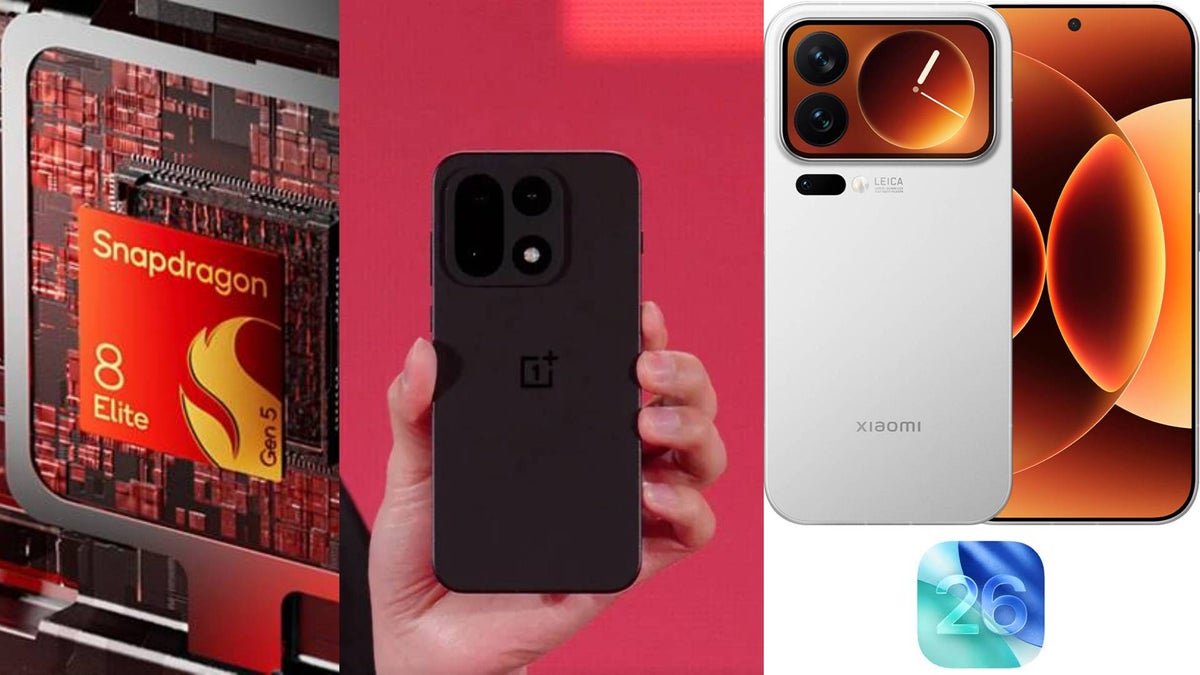
Apple, OnePlus, Xiaomi, and Qualcomm are doing their best to confuse us.
This article may contain personal views and opinion from the author.
When was the last time you saw a product’s name, decided it sounded like your next purchase, and pulled the trigger? I can bet it happened all of zero times.
For some reason, chip producers, phone makers, and software developers all decided at once that this was the perfect year to rename their offerings.
Apple jumped from iOS 18 to iOS 26. Xiaomi announced the 17 series instead of the 16. OnePlus is skipping 14. And don’t even get me started on Qualcomm.
Keeping up with tech news is complicated as it is, even for a journalist. Companies are making it harder to keep track of new launches by capricious name changes.
I get it, all companies need to reinvent certain aspects every few years, and name changes are an integral part of rebranding efforts.
What doesn’t make sense is Xiaomi blatantly admitting that the sole reason it strayed from its usual naming convention is that it wanted its new phones to be viewed as direct iPhone 17 Pro rivals. While less informed customers may fall for such tactics, most consumers would perceive this as desperation.
Receive the latest editorials
By subscribing you agree to our terms and conditions and privacy policy.
OnePlus is supposedly moving from 13 to 15 because the number 4 is considered bad luck in Chinese culture. While that’s totally its prerogative, I am just glad that the company didn’t also skip number 13.
Qualcomm is perhaps the worst offender. The successor to the Snapdragon 888 5G was the Snapdragon 8 Gen 1. 2024’s flagship chip was called the Snapdragon 8 Elite, but this year, we got the Snapdragon 8 Elite Gen 5.
And if you think Qualcomm skipped a generation, that’s so not true, according to the company.
The chip maker says that it adopted single-digit naming in 2021, and the Snapdragon 8 Elite Gen 5 is the fifth chip in the series. Silly of you to even imply that it’s not continuing with the same naming convention.
Recommended Stories
At least Apple’s intention to align the software version numbers with the calendar year of their lifetime seems logical.
With my doomscrolling, my Kindle, and the giant screen in the living room already competing for my attention, it’s not easy to keep track of multiple, and in most cases, unnecessary name changes every year.
And maybe I am supposed to have all those names on my fingertips at all times, and this blog post is another self-sabotaging move. Classic me.
However, with a barrage of new launches every year across different devices and software categories, I really don’t appreciate these erratic changes.
The only case where it would make sense to deviate from a naming strategy is when a device is completely different from its predecessor. In those instances, it would be more prudent to discontinue the last-gen device, as Samsung did with the Note.
The smartphone market is fiercely competitive. While mainstream manufacturers like Apple can afford to have all sorts of appellations in their portfolio, from mini to SE to Air to Ultra, others might want to consider treading a little more carefully.
50% Off Visible+ Pro Annual Plan
Just bring your number and any iPhone – code ILUVIPHONE
We may earn a commission if you make a purchase
Check Out The Offer
Follow us on Google News
Recommended Stories
FCC OKs Cingular\’s purchase of AT&T Wireless



